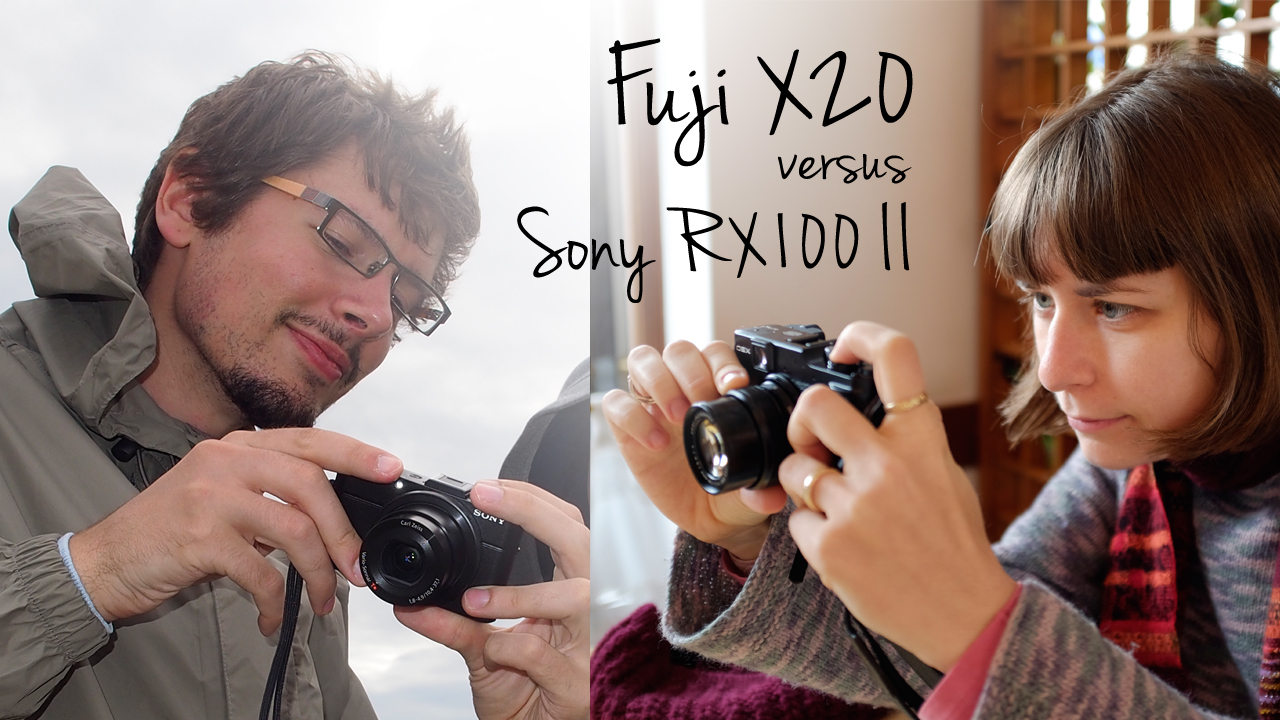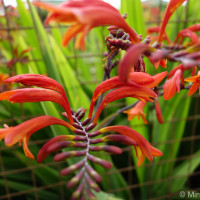The words “compact camera” or “point-and-shoot” have long been synonymous with convenience. You can slip them in your trouser pocket, drop them in a bag along with your wallet and keys, and even sneak one into a concert if you have a knack for putting on a poker face – all things you cannot do with a DSLR.
However, even only two or three years ago, convenience called for compromise. The image quality and performance of compact cameras, though much improved over the years, was only enough to satisfy the most casual of users; people who cared about capturing memories and sharing them online. A professional photographer would never have considered dumping his DSLR for a compact on informal occasions, much less for professional work. If worst came to worst, he would simply use the camera on his smartphone for casual shots. In fact, in recent years smartphones have become the most popular cameras because of how easy and immediate it is to share content with the world.
Fast-forward to 2013, and we now see a plethora of compact cameras that are inches away from rivalling the quality of a low-end DSLR. And two of the most important of the year are the subject of this comparison. On one end of the photographic spectrum, we find the incredible little Fujifilm X20, complete with rangefinder retro styling and the much-admired Fuji X-Trans sensor. On the other stands the relative newcomer, the Sony RX100 II, an extreme upgrade from the former RX100 with excellent video specs and ISO performance.*
As with every comparison, our goal isn’t to trumpet one camera over another, as every model has its merits and its flaws. Our goal is rather to help you understand which camera best suits your personal photographic needs. Of course, if there is a feature or aspect about a camera that really stands out, we won’t hesitate to wax lyrical a little. 😉
*Note: We didn’t have both camera at the same time. Therefore you won’t find direct image comparisons with the same composition.

Fujifilm X20

Sony Cybershot DSC-RX100 II
Main Specs
There are a lot of differences between these two cameras. In comparison to most other cameras in the “compact” category, they both have a large sensor and a fast optical zoom but the specs are completely different:
The X20 has a smaller sensor (2/3″ type) with a 4:3 native aspect ration (same the micro four thirds cameras).
It has a faster optical zoom at its longest focal length (f/2.8).
The X20 also has a built-in optical viewfinder, which makes it quite unique in its category.
The RX100 II sensor is 1/3 larger (1 inch) and has a native 3:2 aspect ration, common to all APS-C and Full frame cameras.
Its optical zoom has a slightly faster aperture at its shorter focal length (f/1.8) but a slower aperture at the longest focal length (f/4.9).
The RX100M2 doesn’t have a built-in viewfinder.

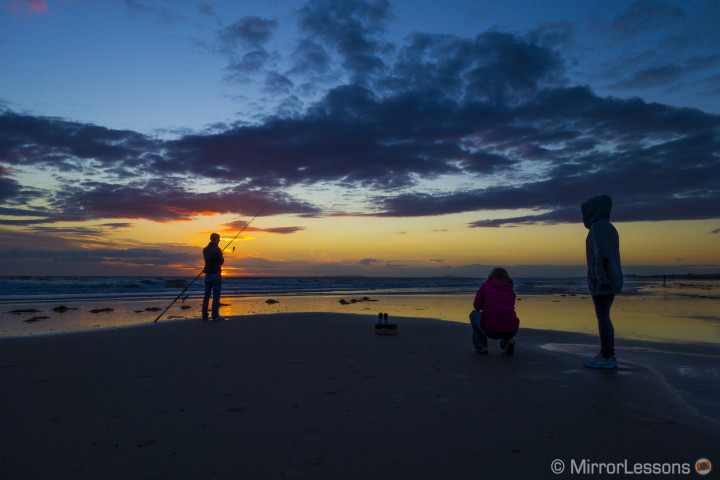

[stextbox id=”text-box-toc” caption=”Main Specs” collapsing=”true” collapsed=”false”]
Fuji X20
- Sensor: 12 megapixel 2/3-type X-Trans CMOS II sensor
- Lens System: 4x Fujinon optical zoom – 28-112mm (35mm equivalent) – f/2.0-2.8
- Macro Mode: Yes close to 1cm (28mm only)
- ISO Sensitivity: 100-3200 (raw + JPG), 100-12800 ISO (JPG only)
- Max shutter speed: 1/4000
- Continuous shooting: 12 fps continuous shooting for 11 JPGs (for RAW, 9fps for 14 frames)
- Autofocus: Hybrid (contrast/phase detection AF)
- Focus peaking: Yes
- Internal Stabilization: Yes (lens shift type)
- Viewfinder: Optical with Digital Trans Panel
- LCD monitor: 2.8-inch with resolution of 460,000 dots
- Movie recording: Full HD 1080 at 60fps
- Extra features:360° Motion Panorama,
- Film Simulation Modes
- Built-in Flash: Yes (Integrated manual pop-up flash)
- Dimensions: 117 x 70 x 57 mm
- Weight: 12.7oz (with battery)
Sony RX100 II
- Sensor: Exmor® R 1.0” CMOS sensor
- Lens System: 3.6x Carl Zeiss Optical
- Zoom – 10.4-37.1mm (28-100mm equivalent on 35mm format) – f/1.8-4.9
- Macro Mode: Yes close to 5cm (10.4mm only)
- ISO Sensitivity: ISO 160 – 12800 (expandable ISO 100 and ISO 25600)
- Max shutter speed: 1/2000Continuous shooting: 10 fps in AF-S mode, 2.5 fps in AF-C mode
- Autofocus: Contrast-detect AF
- Focus peaking: Yes
- Internal Stabilization: Yes (Sony steadyshot)
- Viewfinder: No (optional external EVF available)
- LCD Screen: 3.0” 1,229,000 dot tiltable LCD
- Movie recording: Full HD up to 50p/60p in AVCHD 2.0
- Extra features: WiFi, NFC, Sweep Panorama, Smile Shutter technology
- Built-in Flash: Yes (Built-in, Pop-up Auto)
- Dimensions: 101.6 x 58.1 x 38.3 mm
- Weight: 7.8 oz/281 g
[/stextbox]
Ergonomics and Design
The Fuji X20 has inherited a retro design whereas the RX100 II is the embodiment of modernity.
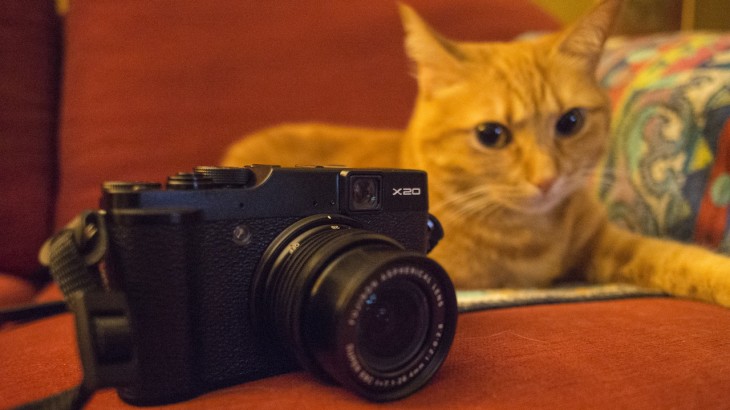
The X20’s design has that delicious retro look that harks back to the days of rangefinder cameras. Based on the original Fuji X10, it has a more “boxy” feel than standard compact cameras due to the unrounded corners. This said, it is very pleasant to look at and hold all the same. It is available in black or black/silver.

The RX100 II, on the other hand, takes its design from the previous RX100. In fact, the two are almost indistinguishable save the RX100 II printed in white above the LCD and the hot shoe. It has smooth rounded corners, a black sheen, and is very similar in appearance to your average modern metallic compact camera from Nikon or Canon. It just goes to show that you don’t need to go retro to create a classy looking camera.
Both have a wonderful design and a very sturdy build with a solid metal feel. But when it comes to ergonomics…
The X20 feels great in your hand and is very easy to navigate thanks to the well-placed buttons and dials. You can really tell that a lot of thought has gone into this camera’s design.
The LCD cannot be flipped out like on the RX100 II.
The RX100 II is so small and compact that it can easily fit in a man’s trouser pocket. The design is user-friendly but the dials and buttons have been cramped together on the rear to make way for the large LCD, something which could pose a problem for those with big hands.
The LCD screen can flip out but the hinge feels a little fragile.
Functionality & Ease-of-use
Both cameras are easy to use but have diverse menu systems.

The X20 has the wonderful “Q” button found on all X series cameras where you can access all the main settings for your pictures in an instant. There is also a Fn button on the top right that you can assign to ISO or WB for example. The rotating four-way sub-command dial allows you to access macro mode and other main settings. My only complaint is that it feels rather flimsy when you turn it.
There is also a mode dial and exposure dial just as you’d find on high-end mirrorless cameras, but it is lacking in shutter speed/aperture dials, meaning that these two functions must be controlled from the sub-command dial and toggle on the back of the camera.
You can also access the full menu by pressing the button in the centre of the sub-command dial. The menu is easy to navigate and comprehend.

The RX100 II has a Function button that can be customised with up to seven different functions. You have to press it repeatedly until you reach the desired setting, which makes it slower than the X20. Other functions are assigned to the command dial, making the overall operability of the RX100 II good enough. The most clever thing though is the command dial centre button that allows you to quickly select a point for AF tracking.
Though, like the X20, the RX100 II lacks shutter speed and aperture dials, it has a sturdy sub-command dial and mode dial, a dedicated movie button, a function button, and a nice big 3-inch LCD display to make up for it.
The Menu system is more laborious to navigate. Instead of giving you the main settings, it throws everything at you at once. For those just getting to know the camera, this can be cause for a lot of menu digging but you get used to it after a while.
Both cameras feature a lens ring.
The X20 can be turned on and off by rotating the lens. Changing the zoom length with a zoom ring on the lens certainly makes a difference when you want a precise composition. It is smooth, accurate and its metal construction is very nice.
It is a shame that the X20 doesn’t have a dedicated focus ring. When you switch to manual focus, you have to use the sub-command dial, which is very uncofortable, especially when you are in macro mode.
There is also a zoom ring on the RX100M2 but it is very sensitive to touch, making it hard to perform a smooth zoom. Zoom isn’t the only function you can assign to the ring. You can also assign other functions such as aperture.
In manual focus mode, the ring on the lens is automatically assigned to manual focusing. Personally, it is the only purpose for which I use the ring.
Both have a high quality LCD screen, but one has a viewfinder while the other doesn’t…
The X20 has an optical viewfinder, which is rare in compact cameras. However, using the OVF you must be aware of the parallax issue: that is, what you are seeing is not exactly what you are shooting, because the viewfinder is at a slight distance from the lens. The effect is most noticeable at short distances or at longer focal lengths, so it is more convenient to use the LCD screen for macro or portrait shots, and the OVF for wide landscape shots.
In order to remain as compact as possible, RX100 II has done without a viewfinder. I admit I never really miss it as compact cameras are meant to be used with an LCD. You can mount the same EVF designed for the RX1 on the hot-shoe but it is very expensive (more than $400). The LCD of the RX100 II is large, bright and detailed and fairly easy to see even in bright sunlight.
Something I found curious is that neither the X20 nor the RX100 II has a touchscreen. Fuji doesn’t include a touchscreen on any of its cameras, but Sony has already implemented one on some of its NEX cameras.
Image Quality
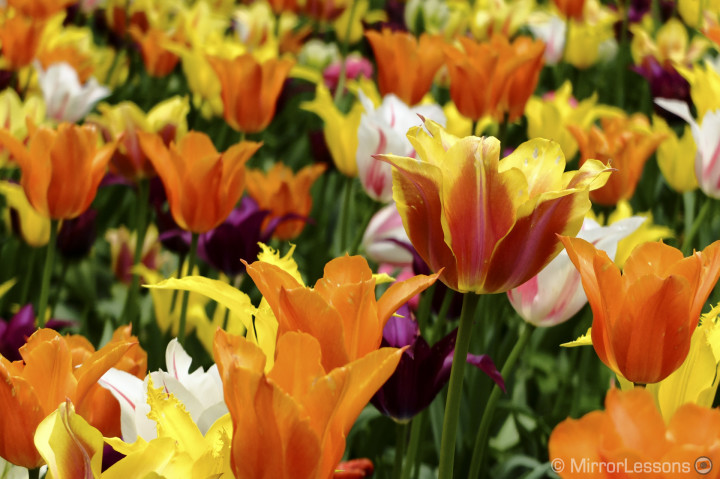

The RX100 II, with its 1-inch sensor, delivers an overall better result when it comes to image quality but the X20 retains some unique features…
Though the X20 has a small sensor, it has earned its place amongst X-series cameras thanks to the presence of X-Trans II technology. It delivers excellent colours and tonal range.
Dynamic range and ISO performance are good considering the sensor size (though serious deterioration can be seen at 3200 ISO and above).
In the case of the RX100 II, having a larger sensor than the X20 allows for better dynamic range. I was astounded by the amount of detail I was able to retrieve in the RAW files from the shadows. (With highlights, you have to be more careful.)
The ISO performance is also incredible–I felt that I could work up to 6400 without worrying about noise.
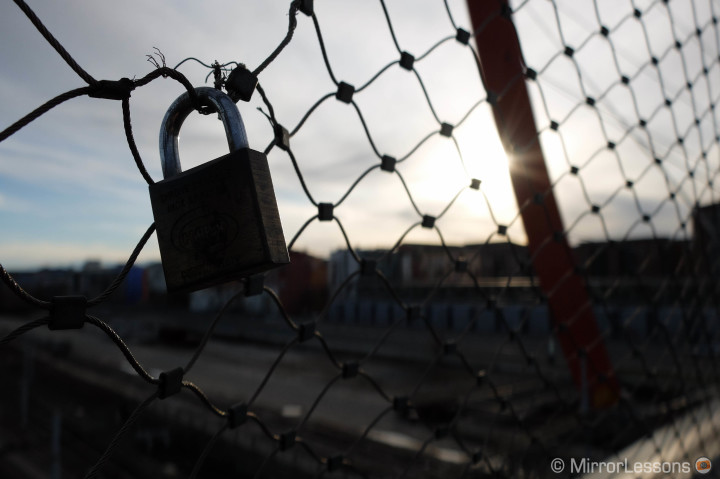
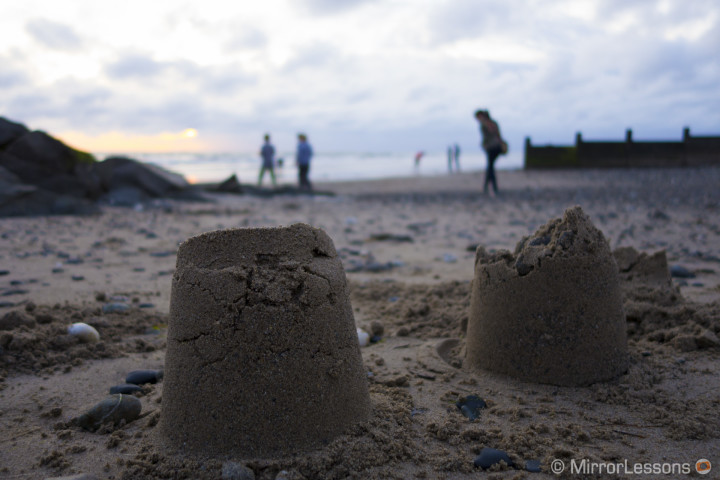
Colour reproduction is good from both cameras but…
The X-Trans II sensor on the X20 renders images less “digital” than other cameras and that’s what makes it stand out from the crowd. The X-Trans sensor has that ‘something extra’ when it come to tonal range. The colour reproduction produced by the Film Simulation Modes is also wonderful – I have a particular fondness for the Astia mode.
I found the RX100 II good at reproducing natural colours with the Standard profiles. To be honest, I was generally happier using Standard and Portrait at all times as the Vivid profile rendered the images too “digital” for my personal taste.
Though I didn’t have the two cameras in for testing at the same time, my impression is that you can obtain great results by working with the out-of-camera JPGs and Film Simulation Modes on the X20, whereas with the RX100 II you will need the RAW file to unleash the camera’s full potential.
Image quality also depends on the lenses and both cameras have excellent optical zooms. The focal range is very similar. The X20 is a little bit longer (112mm equivalent at its longest focal length versus 100mm on the RX100 II) while they both have the same 28mm equivalent short focal length.
The X20 has the advantage of having a fast aperture at the longest focal length, which makes it better for portraits for example.
Furthermore, the ability to focus at a mere 1cm with its macro mode makes it quite unique in its category.
The RX100M2 also has a very nice lens with a fast 1.8 aperture at its widest angle that will allow you to achieve a very pleasant bokeh if you focus close to your subject. Great for detail, less for portraits as you will see some distortion in the person face.
In macro mode, the camera cannot focus as close as the X20. Also, unlike the X20, you can’t access the function in manual mode.
To see more example photographs, be sure to visit these additional X20 galleries:
For more example photographs, you can also visit these additional RX100 II galleries:
Autofocus and Performance
Both cameras feature good (though not perfect) focus options…
The autofocus of the X20 is quite fast and locks on quickly to most subjects, both stationary and moving, though accuracy through the OVF decreases the more you zoom in. I find it struggles in low-light situations and macro mode at times, but in any other circumstance, the AF doesn’t miss a beat.
The RX100 II too has a very quick and accurate autofocus that also works fine in low light conditions. In AF-C, it works fine but is slightly less accurate. I recommend activating the tracking option, since it is very clever and quick.
The overall performance of the two cameras is very good. They both turn on very quickly, and all operations run smoothly. They are also fast in burst mode.
The Fuji x20 certainly holds its own in the speed category. You can shoot up to 12fps in high speed continuous shooting mode with a 0.5 second shooting interval as long as you shoot JPG. (It becomes 9fps if you shoot in RAW format.) Even after 12 rapid shots, the camera will continue to shoot but at slightly longer intervals between each photo. This makes it a great camera for shooting active children, cars, or fast-moving animals like dogs or squirrels.
On the RX100 II, you can choose between continuous shooting and speed priority continuous shooting (max. 10fps). It isn’t as fast as the X20, but it is still snappy enough to capture your kids running around in the backyard, which as a family camera, is all it was designed for anyway.
Extra Features and Video Capabilities
The extra functionalities of both cameras are interesting too…
The X20 does not have built-in WiFi but I don’t miss it. I rarely upload photos to the Internet without editing them on my computer first anyway.
The X20’s Panorama mode works very well in most situations. It stitches images together without any sign of misalignment or distortion as long as you follow the on-screen directions correctly. It is also easy to use. Keep in mind that the resulting image will always be a JPG.
The RX100 II comes with built-in WiFi and NFC. It is very easy to connect to an iPhone or iPad but I cannot speak for other smart devices.
I enjoyed using the Panorama mode on the RX100 II as well. Once again, there was no sign of misalignment or distortion. The fact that compact cameras such as these are able to stitch together perfect panoramas on-camera is a true sign that digital technology has come a long way.


Apart from the Film Simulation Modes (Fuji’s picture profiles), there are also some advanced filters that generate some fun effects.
The RX100 II comes with a series of fun Art Filters for beginners or professionals who want a day off from, well, being professional!
When it comes to video capabilities, the RX100 II definitely has the upper hand.
The X20 shoots in Full HD but is limited to 30fps or 60fps (no PAL frame rate). All the settings are automatic: you cannot adjust exposure, shutter speed or ISO. It is fine for casual amateur videos, but don’t expect more.
The RX100 II packs a professional video codec (AVCHD 2.0) and the camera takes full advantage of the sensor quality especially concerning low-light performance. In video mode, ISO only goes up to 3200 but it looks very clean and sharp. The only complaint I have is that for some unknown reason AF-S won’t work for video; you either get manual or AF-C. Below you can check out a video I made during my holidays in Wales.
Battery life
The battery life is slightly better on the RX100 II…
Fuji X cameras aren’t well known for their battery life with respect to other cameras on the market. If you intensively use this camera all day, you will need an extra battery to keep you going, even if you fully charge it the night before.
The battery life of the RX100 II actually took us aback. When we first bought the camera, we popped the battery into the camera expecting it to last a half an hour at most, but it ended up lasting nearly four hours. It can last more than one day if used moderately.
Conclusion
While they both carry a price tag that is too high for most beginners, the Fuji X20 and Sony RX100 II both make excellent choices for advanced amateurs and even professionals looking for the perfect compact camera to carry around at all times. Not only do they provide high image quality, excellent performance and a great overall user experience but they’re the perfect size for everyday shooting and travelling. As Mathieu and I have both said on more than one occasion, they bring the word “fun” back into serious photography.
The Sony RX100M2 is newer and its price is higher, around $200 more. The overall image quality exceeds the X20 but the Fuji has some unique features. If money is your main concern, I can only recommend the X20. Otherwise, you might find the RX100 II more suited to your needs.
Choose the X20 if:
- You prefer having a viewfinder on your camera
- You do a lot of macro photography
- You enjoy the film-like look produced by the X-Trans sensor
- You prefer retro styling to the modern look
Choose the RX100 II if:
- Extreme compactness is your number one priority
- You want exceptional video performance for a compact
- You want better dynamic range and ISO performance
- You’re keen on connecting your camera wirelessly to a smart device
Reviews
You can also read our full reviews of the two cameras below:
